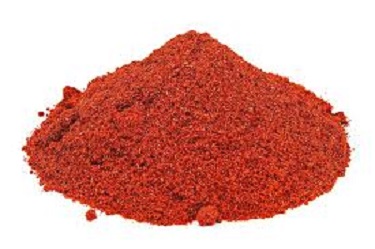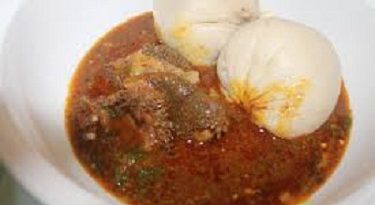Paprika: The Sweet, Spicy, and Smoky Spice
Paprika is a ground spice made from dried red fruits of the larger and sweeter varieties of the plant Capsicum annuum, called bell pepper.
Paprika especially Badia smoked paprika is one of the top 5 spices in cooking, along with cinnamon, black pepper, cumin, and garlic.
Table of Contents
Origin
Native to the Americas and later Spain, it is cultivated in China, the Middle East, and Hungary.
The name “paprika” is Hungarian and its root is in the Greek “peperi” and in the Latin “piper” both of which refer to pepper.
The peppers used to make paprika made their way to Hungary after Christopher Columbus brought them to Europe.
From Spain, the cultivation of the peppers spread to the South of France and England.
In Hungary and elsewhere throughout Europe, the pepper plants were first used as decorative houseplants.
Common Uses of Paprika
When it comes to Hungarian cuisine, paprika is a major ingredient in dishes like chicken paprikash and goulash.
It is best to use the traditional Hungarian varieties of paprika when making these dishes rather than the smoked Spanish varieties.
Paprika is as tasty as it is vibrant. The spice carries sweet, earthy, smoky, piquant, slightly bitter, and fiery flavors.
Too often we find ourselves reaching for the spice as a splash of color for our food.
The most common variety used for making this spice is tomato pepper.
Sometimes with the addition of more pungent varieties, like Badia smoked paprika and cayenne pepper.
Different Paprika for Different Tastes
This spice can range from mild to hot, smoked or not smoked, or can carry an earthy flavor or be noticeably sweet, all depending on the region the paprika comes from.
One of the main differences that determine a paprika’s spiciness is how much of the mid-rib of the pepper—and the seeds it contains—is removed before grinding.
Mild paprika has no mid-rib or seeds; hot paprika may have some included.
Hot paprika may also be made from a blend of bonnet pepper and other peppers like Capsicum annuum or sweet pepper, which have a spicier flesh.
In Spain, you make this spice by smoking the peppers dry, infusing a smoky flavor in the resulting spice.
In Hungary, it is classified into no less than eight different grades.
Sweet paprika is the most common. It has a bright red color. It is most commonly labeled as just “paprika” on a bottle, while the other two types are distinguishable.
Spice It Up
With a new understanding of this spice, you can now heat up any dish with sophisticated varieties of flavors that paprika has to offer.
Turn up the heat with hot paprika, cool it down, and add some subtlety with sweet paprika, or tingle your taste buds with the smoky bite of smoked paprika.
Nutrition
All Capsicum peppers are high in vitamin C, much of which is retained in the process of making paprika.
It is high in iron and is a concentrated source of beta carotene, which the body then converts into vitamin A.
Also, it contains a number of other vitamins and minerals as well. It has a large amount of dietary fiber and antioxidants, especially as spices go, and even a bit of protein.
Health Benefits
This spice contains carotenoids which are a family of antioxidants that help prevent disease.
One tablespoon of this spice contains 100 percent of the recommended daily intake of vitamin A as a result of beta carotene, just one of the carotenoids it contains.
How to Purchase and Store
- Firstly be cautious of how much heat you want.
- Secondly, it may be good to have a spicy variety and a not-so-spicy variety on hand.
- Thirdly, you can buy sweet, spicy, and Badia smoked paprika at most major stores/supermarkets
- However, you can buy it bottled or in bulk and store it in a container with an airtight lid.
- In whichever case, keep it in a dark cabinet away from heat and sunlight.
Flavor & Aroma
The quality as with all spices is entirely dependent on nature and the growing environment.
Some people prefer an intense, deep red color to impart a better visual element while cooking.
Some, including myself, would rather have flavor instead of good looks.
Harvest Season
You plant these capsicums, in the nightshade (Solanaceae) family in early spring, and harvest them when they turn red and lustrous in the summer and fall.
FAQs
Where is Badia paprika from?
Peru Spain
Paprika Smoked – 16 oz
| Known Allergens | None |
| Country of Origin | Peru Spain |
| Gluten-Free | Yes |
| Halal | Yes |
| Kosher | Yes |
Is smoked paprika preferable to regular paprika?
While smoked paprika is preferable for hearty dishes like baked beans, sweet paprika is an excellent option for lighter recipes like garlic chicken.
Uses: Smoked one will enhance the smoky flavors from your grill more than regular spice powder will.
What recipes call for smoked paprika the most?
The smoky flavor of this Badia spice is its main selling point. Any food gets an incredibly alluring smokey flavor and aroma with even a tiny amount of smoking.
It is traditionally used in the preparation of chorizo sausage and other paella recipes. It is enjoyed in egg dishes, stews, with potatoes, and dry rubs for all types of meat.




Pingback: Burning Bay Leaves Amazing Benefits, Risks, and How to... - 9jafoods